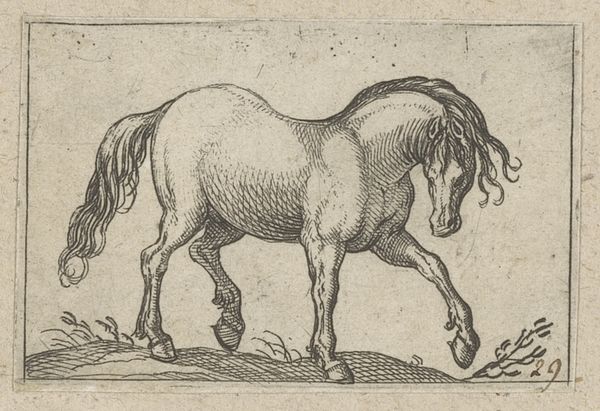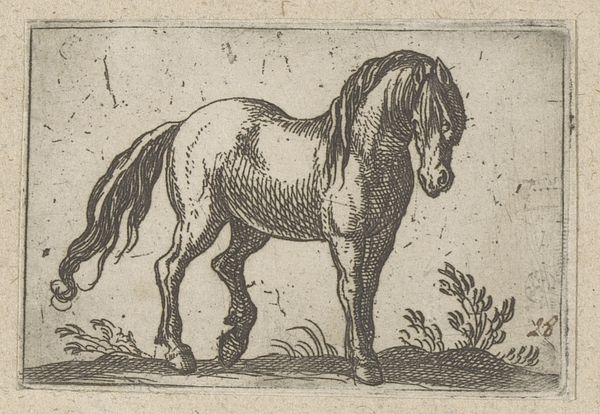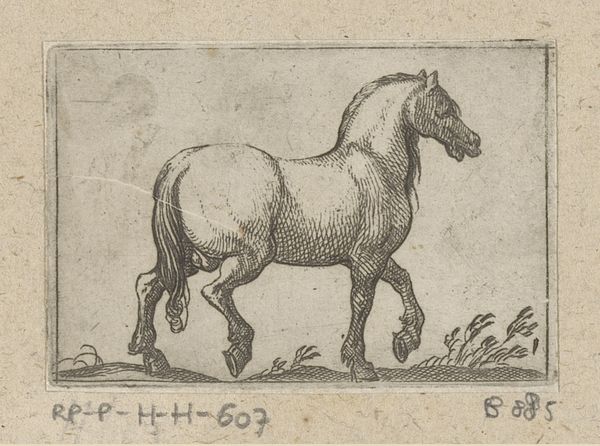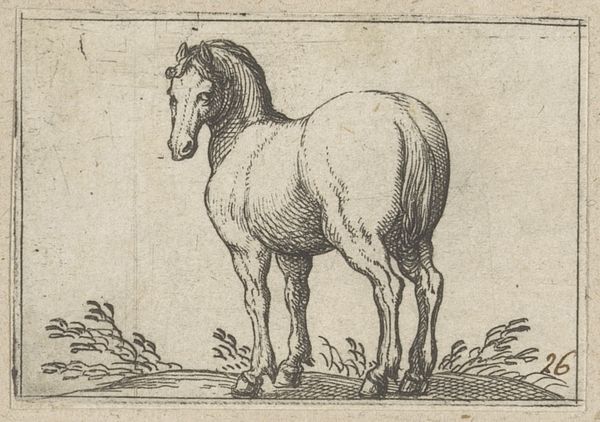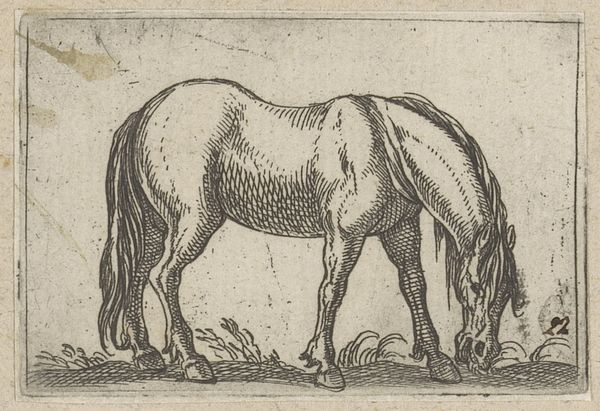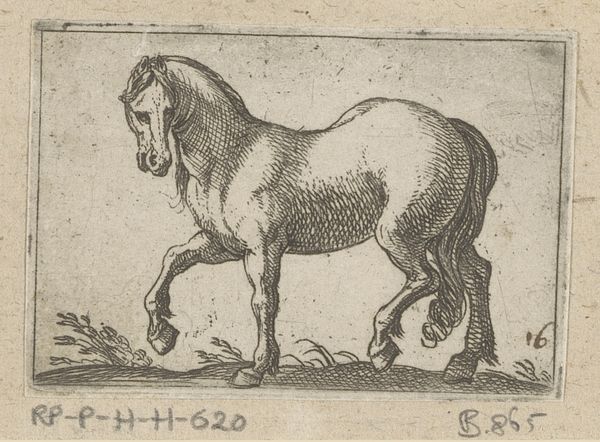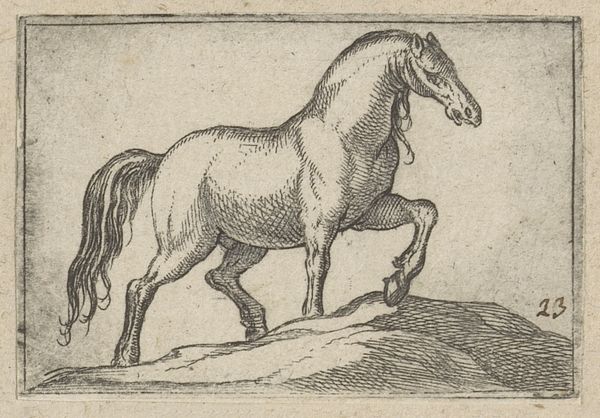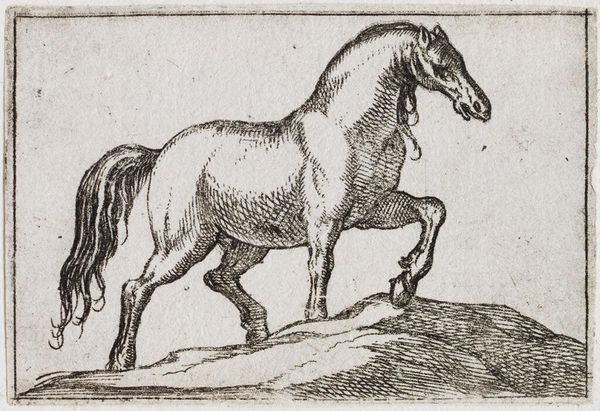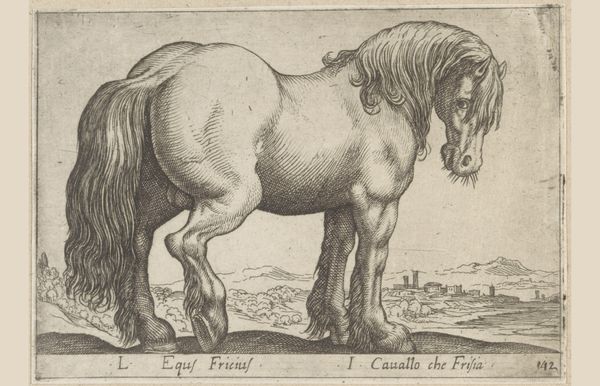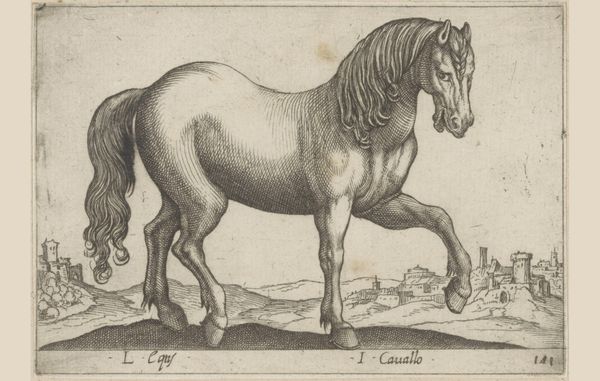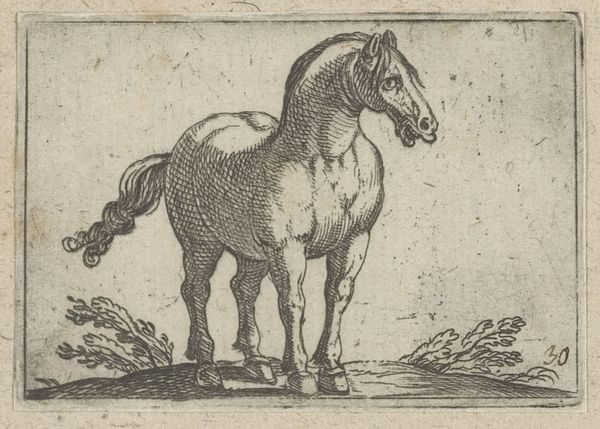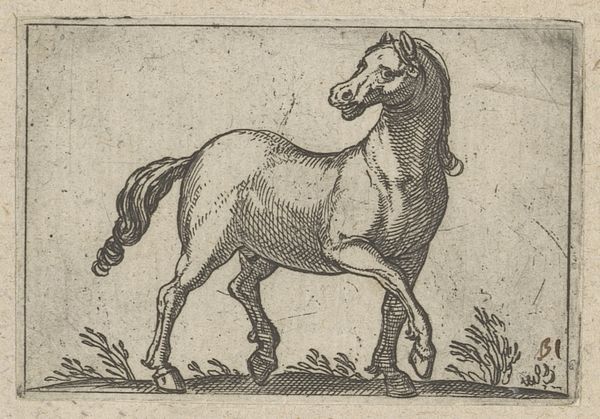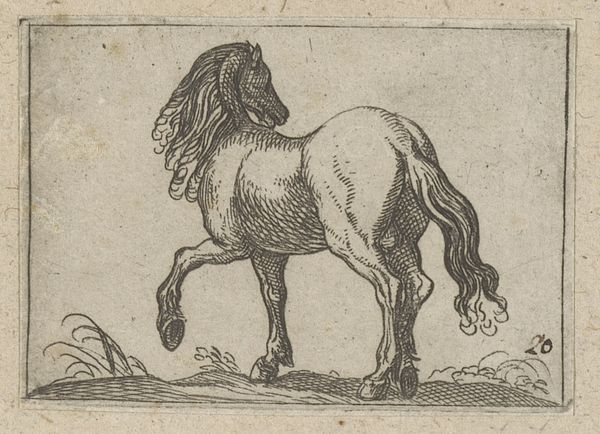
drawing, metal, ink, engraving
#
drawing
#
metal
#
pen sketch
#
figuration
#
11_renaissance
#
ink
#
horse
#
engraving
Dimensions: height 45 mm, width 66 mm
Copyright: Rijks Museum: Open Domain
Antonio Tempesta made this print of a standing horse, facing left, using etching, sometime between 1575 and 1630. The etching technique involves drawing with a needle on a metal plate covered with wax, then bathing it in acid; the acid bites into the exposed lines, allowing them to be inked and printed. The image is defined by the artist’s skillful manipulation of line. Notice how the density of the lines creates a sense of volume and shadow, particularly on the horse's flanks. Tempesta also used cross-hatching to render the texture of the horse’s coat and the ground beneath its hooves. The medium allows for the detailed depiction of the horse's musculature and flowing mane. Printmaking in this era was a key technology, and Tempesta's skill allowed for the wide distribution of images. By understanding the labor and the mechanical processes involved, we can fully appreciate the artistry of this work. It bridges the worlds of fine art and craft, and makes us consider how images circulated in early modern Europe.
Comments
No comments
Be the first to comment and join the conversation on the ultimate creative platform.
